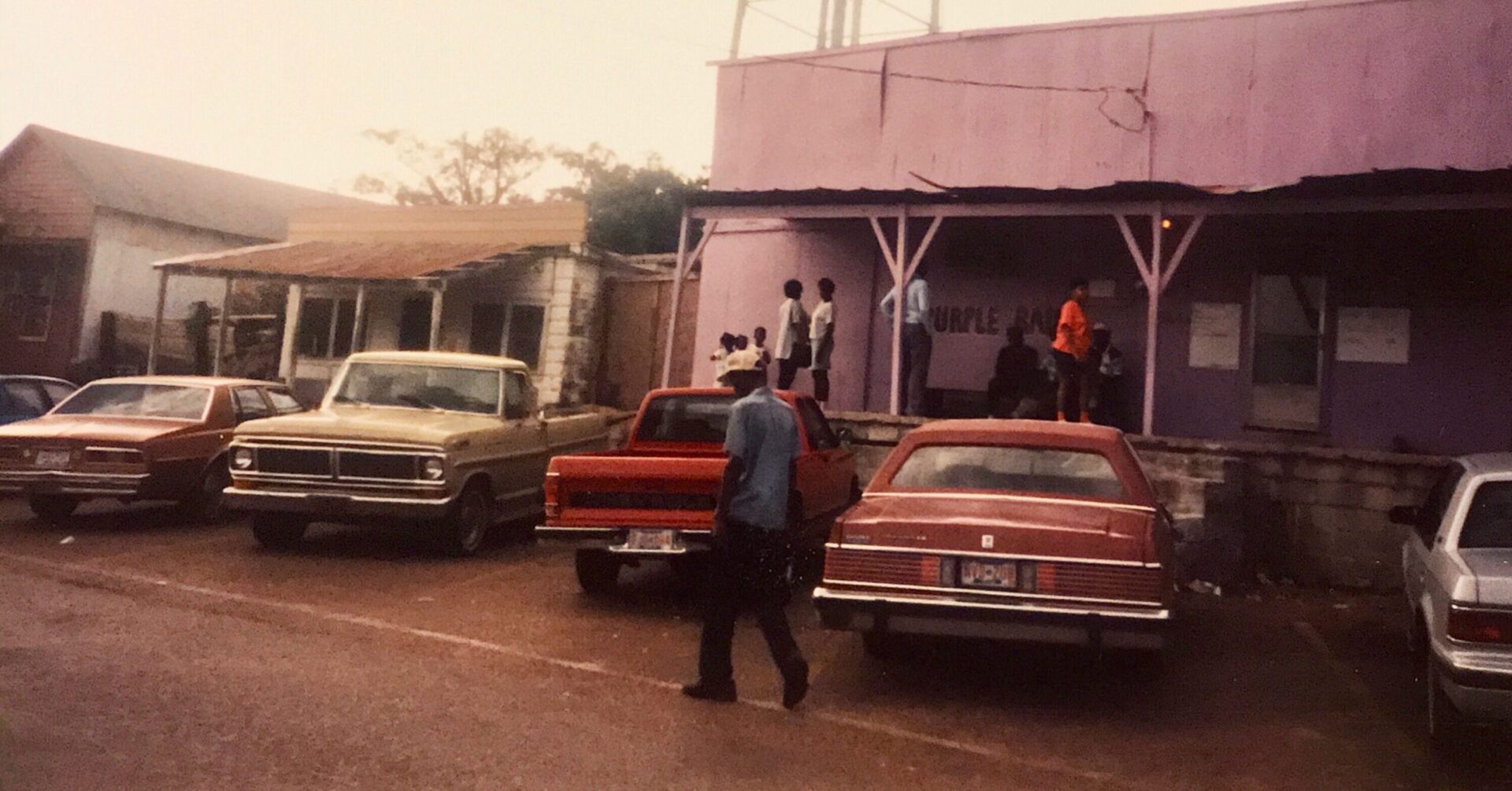





















































































































On the Sunday of Memorial Day weekend, I decided to continue my exploration of small towns and backroads in the Mississippi Delta. My first stop was a community called Savage, Mississippi, that Apple Maps showed being tucked between Highways 3 and 4 on the railroad tracks. Although I had heard of the place, I had never been there, and was surprised to encounter a large, abandoned store of some sort, and a small wooden railroad station. Unfortunately, the station was behind fences and today sits on private property, so I was unable to explore it or photograph it close up, but I still managed to get some good photos around the tiny village.
West of Sarah, Mississippi, I came to swamps, and a long, oxbow-type lake called Walnut Lake, bordered by a road of the same name. Although I had read of a nightclub called the Pussycat Lounge that was supposed to be next to the lake, I didn’t see it at all, but at the end of the lake and the road was a quaint tin-roofed grocery store called the Three-Way Grocery where a man was barbecuing meat in front, while a few men played chess or checkers on a table nearby. Although the barbecue smelled amazing, I had recently eaten, so I drove back to Highway 3 and continued south through Marks and Lambert and into the town of Sumner, one of two county seats for Tallahatchie County (the other is Charleston).
Sumner sits on the Little Tallahatchie River, and consists of little more than the courthouse, a restaurant called the Sumner Grille, and an art gallery called the Cassidy Bayou Art Gallery. Neither was open on the hot Sunday afternoon, but I took a few pictures on the Tallahatchie bridge and around the courthouse square, noting the historical marker about the trial of the murderers of Emmett Till, which took place in the Sumner courthouse. An Emmett Till Interpretive Center is located a block off the square in Sumner.
The next town to the South, Webb, seemed larger and more significant, although most of its fairly large business district along Main Street seemed empty and abandoned. Of note was a weatherbeaten frame train station, and what appeared to be a fairly large juke joint.
From there, I came to the town of Glendora, which clearly had seen better days. Almost all the town stretched along the railroad tracks on both sides, and on the east side, along Burrough Street, was a row of rough-looking jukes, including a rather large place called Club 21. The employee there was amenable to me photographing the place, so I got to take pictures inside and out, and I was especially pleased with the classic pool table indoors. What I saw on the west side of the tracks was sad, the ruins of a large building that by the signs visible appeared to have once been Glendora’s City Hall. Only the building’s shell remained.
Things were similar at Minter City, in LeFlore County, where the massive ruins of T. Y. Fleming School sit along Highway 49E west of the actual townsite, although nothing much is left of the town. From the looks of it, Fleming must have at one time been a high school, but was most recently an elementary school. That it had won awards for student achievement didn’t stop the LeFlore County School Board from closing it down, and one of the more ironic things to see there was school’s sign in front of the buildings facing Highway 49E, which included a “No Child Left Behind” logo. With the school closure and abandonment of the campus, it seems that all of Minter City’s children got left behind.
Because I had to make it back to Memphis for a gig, I didn’t go on to Greenwood, despite the fact that I was close. Instead I turned east on Highway 8, but in coming to a little town called Phillip, I spent some time photographing the old downtown area along Front Street, and then got back on the road heading for Grenada.
Founded 1963 Relaunched 2019. The Postmodern South.

I attended T Y Fleming elementary